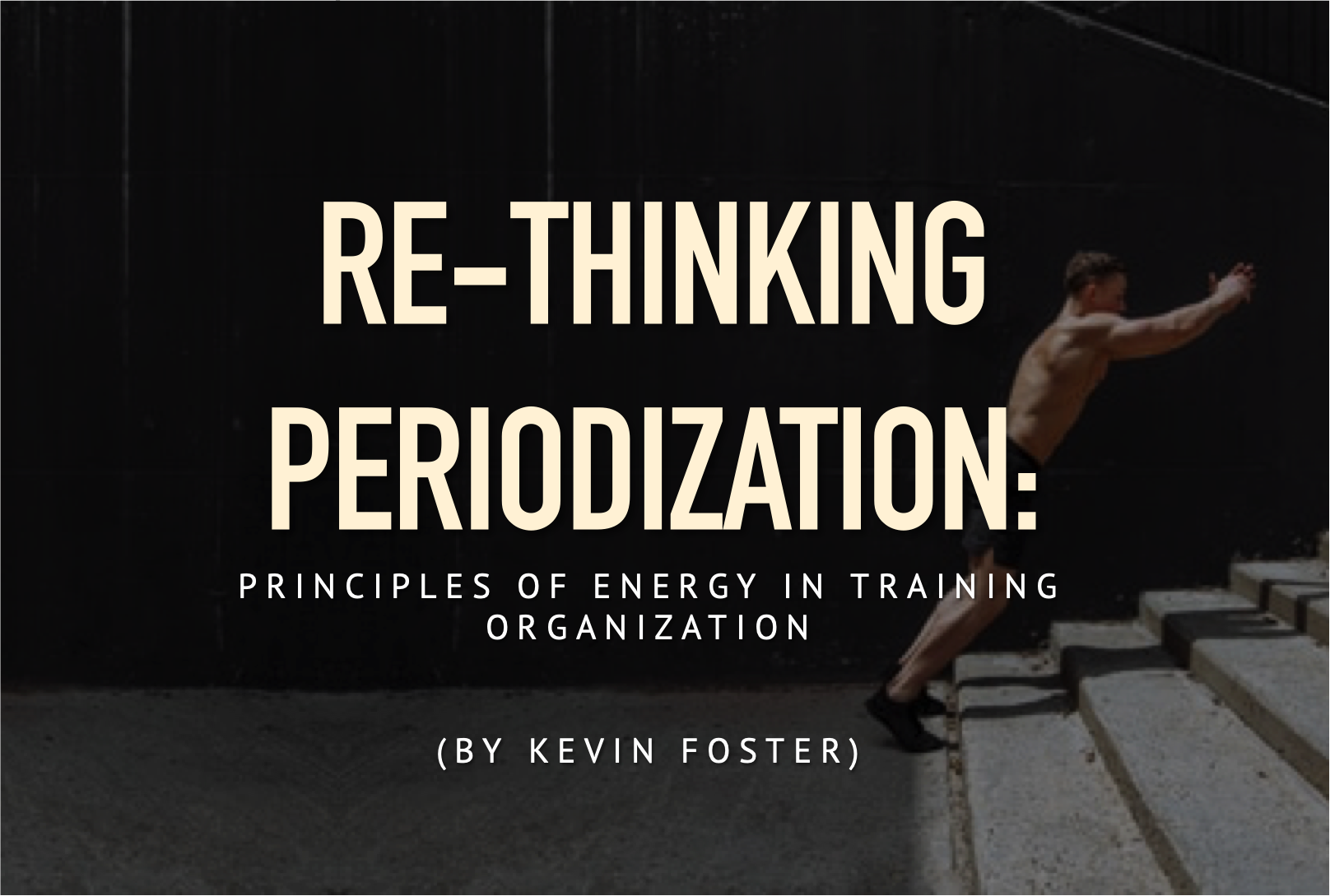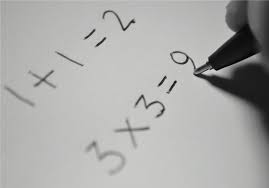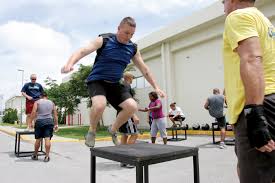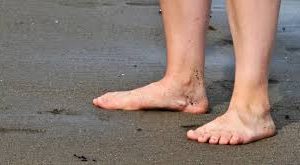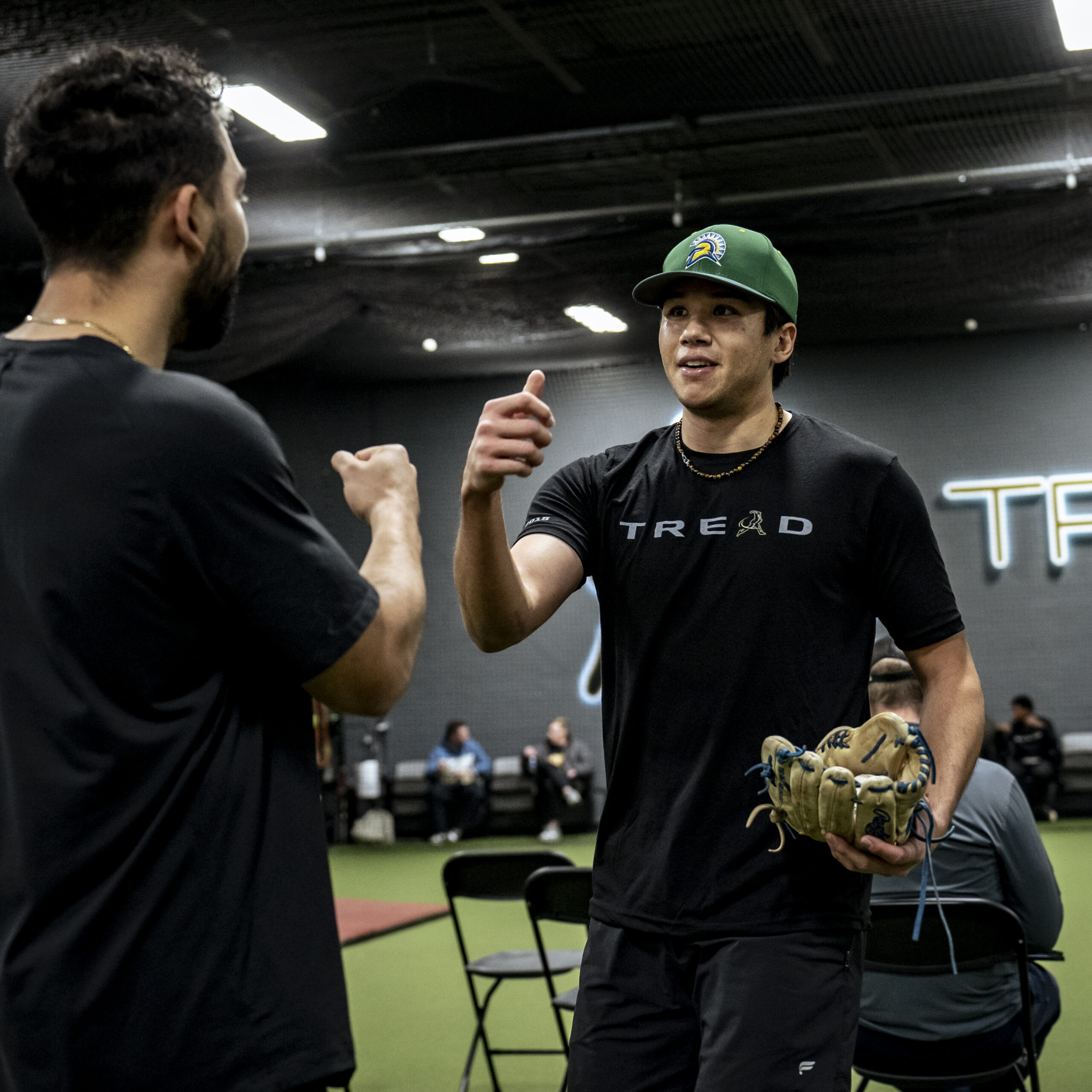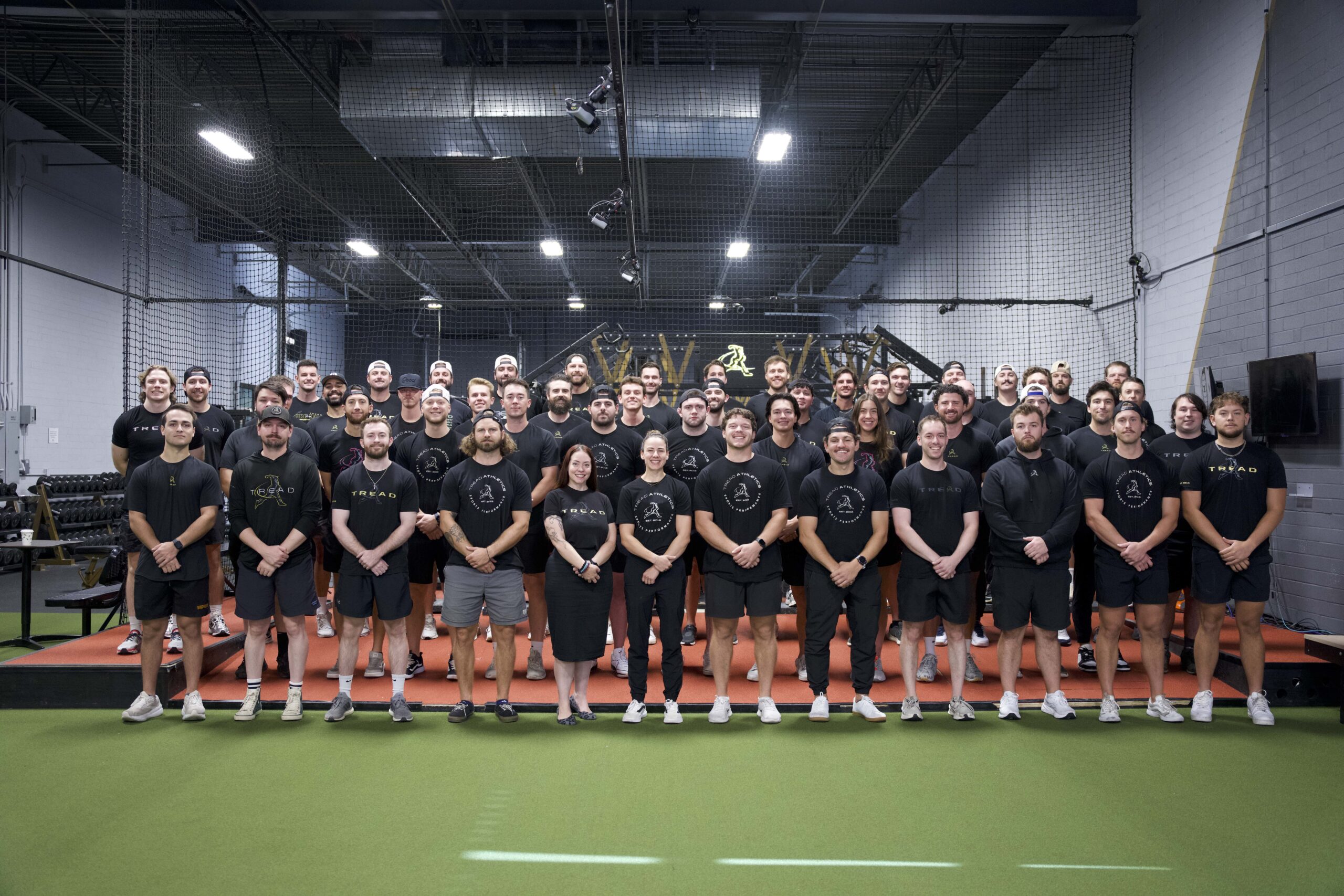by Kevin Foster
This article was originally published here, and has been re-published with Kevin’s permission.
Periodization is the water that all training is dissolved in. Without it, training is just exercise. Yet, it seems that we’ve come to a bit of a roadblock in terms of taking the next step forward in organizing training for athletic performance.
The big-picture problem with periodization is this: There are so many great concepts that have overlapped and intertwined into a mess of technicalities and contingencies that make the field of sports performance look like an ugly cousin of rocket science.
Even more specifically, it seems that the rationale for any given periodization scheme revolves around the same few concepts: stress response curves, CNS management, and muscular/tendon adaptations.
This is fine, BUT, there is so much more to sports performance.
So what is it that we’re leaving out? And more importantly, why?
Quantitative versus Qualitative
We all learned the difference between these two concepts at some point in our middle school science classes. We learned that quantitative measurements are number-based, and in most cases, the most objective form of result that can be obtained.
The qualitative measurement then is description based, requires a level of interpretation, and is considered less concrete. In many cases, we’re told that it is less useful than numbers-based results.
In the field of sports performance, we are hammered with the concept of progressive overload (which is inherently quantitative), ideas like “what gets measured gets improved,” as well as the visual and personal satisfaction that comes with seeing more plates stacked on the barbell.
But what becomes a bit mind-blowing to think about is that there is math, numbers, equations, and quantity associated with everything, including “qualitative” descriptions:
- Colors can be broken down into their wavelength and frequency.
- Shapes will have angles, and arcs, and associated compression and tension forces.
- Technique will have velocities, timing, energy, and positions.
- Our biology can be broken into chemistry, our chemistry into physics, and physics into math.
- Whether we see it or not, we are all walking, talking mathematical equations.
Just because we don’t know how to measure something doesn’t mean that there isn’t a quantity of something associated with it, and it definitely does not make it any less important.
Quantitative measurement is the gold standard in this field. But by becoming so quantitatively driven, we are actually dumbing down the intrinsic complexity of Mother Nature to only what we can see and understand.
Meaning: If something is “qualitative” it just means we do not yet understand how to make it “quantitative” yet. By focusing so heavily on what we can measure (1 rep maxes, sets, reps, bar velocities, muscle activation, etc.), we are ignoring a huge chunk of human movement that is yet to be fully understood (energy, rotation, waveform principles, fascia, functional anatomy).
Genetics
Building off the last point, it seems that we blame genetics any time we do not fully understand where performance (or lack thereof) is coming from.
How many times have we heard about the “genetic freak” that can’t squat his bodyweight but can out jump every athlete in the gym? Or the guy who “lost the genetic lottery” and just can’t tolerate carbs? I’ve blamed my body type for my inability to run correctly more times than I care to admit.
Genetics are a blueprint, not a destiny. We know so much about the power of epigenetics and the power of exercise, nutrition, lifestyle factors, brain plasticity, and the massive web of interactions between the infinite variables within that give our minds, bodies, and spirit a massive capacity for change.
We have the knowledge and resources to overcome everything from lack of mobility, poor body composition, psychological roadblocks, poor sleep, and any other barrier to success. With so many potential factors in performance, let’s look beyond genetics.
New perspectives, outside the box thinking, and questioning assumptions are the only way to break out of the box.
Energy: The Critical Link
Perhaps the most underappreciated concept in sports performance, energy is the universal language of motion. Energy links together EVERYTHING in sport and movement:
We assimilate chemical energy from the food we eat. We then transform this chemical energy into mechanical energy through muscular contractions. Our system of fascia and tendons has a huge amount of elastic potential energy that can be transformed into kinetic energy by utilizing gravitational potential energy.
Our bodies are incredible vessels for energy transformation, all the way down to the molecular level. On top of all that, energy is hiding within every bigger picture biomechanics and physics concept you could think of:
Kinetic Energy = ½ * mass * velocity2
Momentum = mass * velocity
(Momentum and KE are both based on mass and velocity, and are intimately linked in how we move)
Force = Mass * Acceleration = Mass * Change in velocity/ change in time
(Force measures change in momentum and energy in a collision)
There are so many other places that energy is hiding, but these examples show that energy, mass, velocity, time and collisions are all linked.
As I wrote about previously, we often look at movement as how the body must overcome the forces of Mother Nature. We talk about movement in terms of muscles and force.
But at its very core, the foundation of movement is not force, mobility, or raw horsepower of the nervous system. The foundation of movement is an intuitive understanding of how the human body can work in synergy with the laws of physics. How can an athlete manipulate the world around them and the levers within to work with them rather than against them?
Looking at human movement from the perspective of energy, we’ll find ourselves coming back to a new set of fundamentals of movement. By looking at the basic aspects of functional anatomy (instead of training “rules”) in relation to the principal laws of physics (instead of training-based measurements), we can organize training in a light that will set athletes up for more consistent adaptation, better transfer to sport, and that will allow us to find adaptations that are currently viewed as “good genetics.”
Untapped Athleticism
Why is it that some athletes respond better to certain training schemes than others?
The obvious answer is that every athlete will have a unique starting point of posture, muscle strengths and weaknesses, and genetics. But what exactly are these differences that allow for better adaptation?
Every exercise has two sides to it: the physical demands being imposed, and the athlete’s unique anthropometry that is receiving the stress. To break this down even further, we can say that every exercise is a collision (barbell on athlete’s back, athlete’s feet hitting the ground, etc.) that sets off a chain reaction of internal collisions at each respective joint within the body. These collisions are the pathway that energy travels.
From this frame of reference, a squat is not just a squat, a jump not just a jump, and a sprint not just a sprint: the resulting pathway of internal collisions will depend on many factors including weight distribution on feet, shape of feet, mobility restrictions, muscle/tendon integrity, limb angles, etc.
But while it is true that every athlete will have a unique starting point for his or her training, we all have the same basic template of joint-to-joint energy transfer.
That is, we all have feet, ankles, knees, hips, a spine, and shoulders that move and function in the same exact manner. Every hip is a ball and socket joint. Every knee is a hinge. Every ankle can pronate, supinate, plantarflex, and dorsiflex.
While we have no way to quantify it, the human body will generally have an optimal way to sequence any given movement based on the intrinsic system of levers it provides.
Feet-Hips-Spine-Fascia
As described in the previous section, the series of internal collisions that occur through movement can be considered the pathway of energy transfer.
Energy transfer will depend on two major components: posture and stiffness.
Posture can be thought of as the “shape” of the body at any given point in movement. Stiffness can be thought of as how well the body is “glued together” in these positions. The key though is that any given movement will need mobility through specific joints, and stability through certain joints.
We want to utilize the relative mobility and stiffness at each joint to load and unload our body’s fascial lines to transfer energy. Fascia allows for passive, elastic transfer of energy.
It’s this utilization of the passive nature of fascial pathways that allow elite athletes to make performance look so easy. Watch the level of relaxation in the World Record performances of javelin, triple jump, and 100-meter dash.
What is it that allows these athletes to tap into the fascial pathways so naturally? The answer lies in the interaction between the feet, hips, and spine.
To start, our feet are our connection to the ground, and the starting point of the internal chain reaction of collisions that occur in natural (i.e. without barbells on our backs) movement.
Foot posture or the shape of the foot will play a huge role in where the energy travels through the rest of the body.
The foot has three arches: Medial (heel to first metatarsal), Lateral (heel to fifth metatarsal), and Transverse (first to fifth metatarsal). These arches are created from tension through the muscles in the lower leg/ankle. Depending on how strong these lower leg muscles are, a person can have zero, one, or three arches that are utilized in movement, which all contribute to tension through the posterior chain fascial pathway.
Depending on how strong these lower leg muscles are, a person can have zero, one, or three arches that are utilized in movement.
One of the major factors in efficient energy transfer through the foot is to be able to put force into the ground through the 4th/5th metatarsals (the outside ball of foot).
In movement, the foot should contact the ground at the 4th/5th metatarsal and roll from supination to pronation. This “rolling” action creates a smooth and efficient transfer of energy through all three arches into the Achilles and allows for the hip to internally rotate.
The foot-hip relationship is where the magic happens in elite performance. Consider the pathway of internal collisions that is initiated at ground contact:
- The foot rolls from supination to pronation, loading the Achilles tendon through the back of the lower leg.
- At this moment in time, the momentum of the center of mass is creating force at the knee joint at a forward and downwards vector.
- At this same moment, the glutes and hamstrings are drawing the femur back.
This creates massive tension through posterior chain: The shin is being pushed forward at the knee from the momentum of the body’s COM while the femur is being drawn back by the glute, creating massive eccentric tension through the hamstring. On top of that the Achilles is working against the forward shin movement, while the glutes drive movement and the lower abs activate to hold the pelvis level.
This whole sequence of events happens naturally and reflexively as a function of the tensegrity and motion of the body’s system of joints and levers. This pathway creates massive vertical forces that are mostly passive (elastic in nature; without neural drive) and allows the body to maintain its horizontal momentum.
When the feet lack stiffness, or the hips aren’t mobile, the energy will take a pathway that is less intrinsic to the function of the body (e.g. Heel striking in running sends energy through bones and joints instead of fascia; lack of hip IR limits hip flexion, leads to QL compensation and locks up the spine).
The spine also plays a huge role in energy transfer. I wrote previously about how the stretching and contracting of our soft tissue structures can be considered waves of energy. Human movement occurs as a direct result of the relationship between our body stretching away from its resting state and the system of joints and levers that transfer these waves of energy from the ground to our center of mass.
While the location of center of mass will vary depending on individual anthropometry, the lumbopelvic complex could be considered the “center of movement.” This is where all movement and waves of energy will ultimately oscillate around and away from.
In addition, the spine as a whole plays an important role in energy transfer through waveform principles. Consider what happens at the spine during the arm swing of a jump.
- When the shoulder fully extends, the scapula is forced into anterior tilt, which happens in conjunction with a flexed thoracic spine position (even if it’s subtle, this is still the pathway of energy in this movement).
- As the shoulder flexes, the T-spine goes from flexion to extension. And remember that this is happening simultaneously with knee and hip extension.
Two big takeaways: First is this creates a wave of movement from the feet through the spine. It’s very subtle in fast movement, but if you slow it down and exaggerate the motion, you will see and feel the wave.
Second is that timing this properly creates stiffness through motion: The T-spine flexion drives the chest and arms into the loading phase of the jump, but as soon as the stretch shortening cycle begins unloading the chest and arms now moving with the jump into T-spine extension and shoulder flexion. This allows for full body elasticity rather than just relying on the legs to jump.
Periodizing Energy Transfer and Putting it All Together
With the background and perspective of energy in athletic movement, there are several key principles that lead to a logical sequence of training organization.
First we have to look at programming individual exercises not based on what is “supposed to” happen, but rather on the exact mechanism by which it will improve energy transfer through movement. Specific joint mobility, relative muscle stiffness, neurofascial remodeling, timing, and sequencing are all great reasons for programming an exercise.
Strength, power, hypertrophy, flexibility, stability, etc. are all too general of terms to be utilized with any consistent effectiveness.
We also have to understand just how important movement capacity is in athletic movement and energy transfer. The fact is that in any sport, technique can only be as good as what the body is physically capable of doing. You can’t cue your way out of mobility restrictions.
In any sport, technique can only be as good as what the body is physically capable of doing. You can’t cue your way out of mobility restrictions.
And if we continue training through mobility restrictions, what qualities are you reinforcing? Bad posture? Inefficient sequencing?
To take this idea a step further, maximizing movement capacity is the adaptation that drives adaptation. As an example: Jan Zelezny (World Record javelin thrower) had a very high volume of running in his program. Does this mean that running is the key to throwing far?
Well, how are your feet? How is your foot contact? Does your running technique access the frontal and transverse planes? Do you have adequate hip internal rotation?
Jan Zelezny had all of these. This meant that every step he took in running reinforced great movement habits. If you have flat feet, heel strike every ground contact, and are locked in the sagittal plane, running will destroy you. Each step would reinforce awful movement habits, and slowly bring you closer to injury.
The key though, is that you can attain these exact attributes that allowed Zelezny to feed off this running volume.
- You can develop strong feet.
- You can improve capsular rotation at the hips.
- You can unlock the frontal and sagittal planes.
This should be the first step in every athlete’s training. Train to become athletic. Strengthen the arches in your feet. Train to put force through the 4th/5th metatarsal (the most overlooked aspect of athleticism; ankle sprains become a vicious feedback loop because they both cause and are caused by weakness through plantarflexed supination). Improve capsular rotation at hip (internal rotation is a mobility restriction of epidemic proportion). Improve spinal segmentation (trees have trunks, you have vertebrae).
I mentioned the ideas of timing and sequencing. Looking at movement as a chain reaction of collisions helps us understand the importance of this concept.
As a simple example, think about the swinging of your arms while walking. What happens if you consciously change which arm goes forward with each leg?
You’ve changed the timing in such a way that you’ve removed the collisions that create the stretching/un-stretching oscillations through the frontal and transverse planes in the lats, hips, spine, and shoulders.
The body moves as series of interconnected arcs, circles, rotations, and “figure 8’s.” There is a very specific synergy that allows this to happen, and any interruption of the synergy means energy gets lost as waves of energy cancel each other out (see: destructive vs. constructive waves)
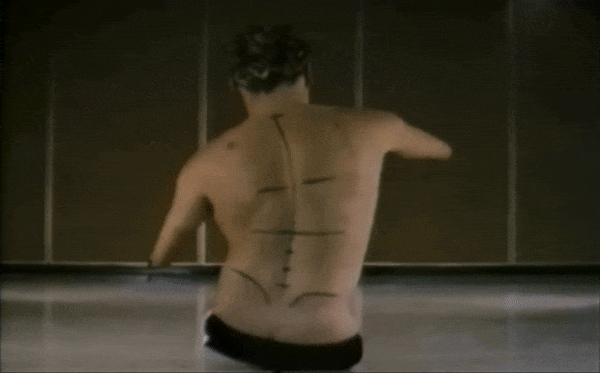
These interruptions can come in the form of mobility restrictions, muscular imbalances, or poor timing of joints within movement (which could be a symptom of either of the previous points).
An important point to remember here is that our unconscious brains know energy best. Our cerebellum will always find the most practical way to move, but it often requires us to let go of how we “think” we’re supposed to move (i.e. excessive/wrong coaching cues). Timing and sequencing then need to be very carefully and intentionally programmed into training.
This is where the next step of training for energy should come into play. It’s the integration of the newly acquired movement capacity into faster, more efficient, more powerful movement sequencing.
The big keys here are the rolling action of the foot from supination to pronation, utilization of adduction in movement (frontal plane energy transfer), integration of spine in movement (think arms in jumping; utilization of lower lats David Weck style), and angles of collisions. If you are not familiar with the work of Adarian Barr, I highly recommend you learn his concepts of “inside edge,” “flap,” foot-path in running, and “conscious to unconscious.” Very few people are talking about energy in athletic preparation, and he is one of them.
I find many of Ido Portal’s drills to be very effective here: duck walks, spinal waves in various positions, “dead arm” circles (where hips and spine move completely relaxed arms through big shoulder circles), and his crawling exercises.
I also find that with the right cues, a completely inward focus (i.e. quality vs quantity focused), and no physical restrictions, running in all of its forms is an amazing drill to learn proper movement.
The last step of training for energy transfer would be the integration of all of these ideas into sport specific movement. This will be completely individual depending on the sport, position, etc., but the concepts behind energy transfer are universal.
The beauty behind the idea of energy transfer in periodization is that it does not complicate training to any degree. In fact, I would argue it simplifies the process:
Taking these ideas into consideration, it gives us a logical progression of training through the year not based on sets, reps, numbers, seasons, and cycles, but rather on how movement is occurring.
What’s also important is that this is merely a new foundation that many of the ideas we currently utilize can stand on. Concepts such as cueing, layering movement patterns, muscle and tendon adaptations, CNS fatigue, and stress responses are still massively important.
These are extremely wide scope principles that have a ton of room for individualization, adaptation, and further expansion.
About Kevin Foster

Kevin runs the Javelin Anatomy Instagram page whose mission is to break down and simplify the anatomy and physics that go into the javelin throw in a logical, critical, and holistic manner. Follow the page @javelin.anatomy to learn more about the science of javelin throwing and training. For any questions or feedback, email javelin.anatomy@gmail.com.

